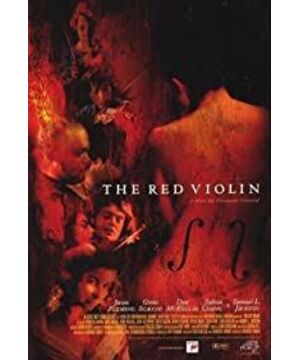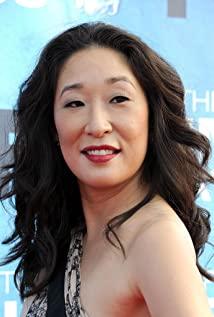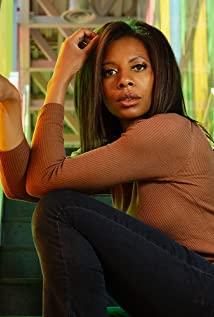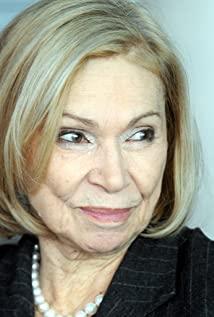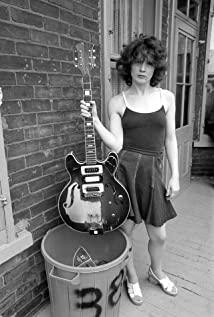Turn off the lights and tear down the movies, read only classics, and push the world's best movies every issue.
"The Red Violin" to the true story of the famous American violinist Elizabeth Pitcairn is a prototype adapted from. When Elizabeth was 16 years old (1990), her grandfather John Pitcairn spent 1.6 million dollars to buy a famous violin for her . This red violin was made in 1727 and its name was Mendelssohn. · Stradivari. The red violin that everyone scrambled in the movie used Elizabeth's antique violin as a prop. Interestingly, Mendelssohn Stradivarius is also mentioned in the movie, played by another violin, and the price is not as good as the fictional red violin. The story begins in a small town in Italy in the 17th century. Anna, the wife of the master piano maker, is about to give birth. She is very disturbed by the high age of childbirth, so she asks the old maid in the family to help her fortune telling. The five tarot cards of the maid heralded the fate of Anna's child (an allusion to the violin).
To appease his wife Anna, the violin maker showed a unique violin that was about to be completed. This is a masterpiece of the violin maker's life and a gift of love for the children.
Anna died during childbirth, and the child was born without crying. The piano maker hurried to him, and within a day he lost his two beloved ones. He returned to the workshop and performed the final process for the violin- mixing the blood of his dead wife into the paint, using his wife's hair as a brush to paint the violin .
The second story takes place in Austria, where the red violin of the master violin maker has fallen into a monastery in the mountains. A music prodigy, Casey, came out here by accident. Casey's understanding of melody and violin playing skills have a depth and maturity that is not commensurate with his age. He is inseparable from the red violin, even holding it to sleep. The child prodigy is weak and has congenital heart disease.
The monks entrusted the child prodigy to Mr. Pang, the music educator, and sent him to Vienna, the capital of music, to receive better music education. Three months later, Casey's playing level improved rapidly, with a rhythm of 208 beats per minute. He and his teacher went to the noble's audition, but the noble caught the red violin in his hand. The young Casey was worried that Jin would leave her, had a heart attack on the spot, and a child prodigy died suddenly.
The red violin was buried in Casey's tomb. I don't know how many years have passed before it was stolen by tomb robbers, and it was transferred to the wandering Gypsies, crossed the English Channel, and came to Oxford, England. The third story took place in England. The talented performer Bu Feidi got the red violin. He was crazy about the sound of this violin. Bu Feidi’s music is inspired by passionate sex with female writers. He can do both, playing the violin and making love with his lover.
At one of his concerts, the conductor had already taken the stage, but he actually had sex in the lounge. The prototype of this character is somewhat like the Italian violinist Paganini. Bu Feidi's performance skills are also the most difficult section of the film. All the tunes are showing off skills, but you can still feel the passion of a performer.
The female writer temporarily went to Russia because of the material of the novel, and Bu Feidi betrayed her lover in the torment of the emptiness and separation of creation. The female writer who was present at the scene angrily shot the violin in his hand with a pistol. Bu Feidi chose to commit suicide in order to atone for love. The violin was also taken away by his Chinese servant.
The fourth story takes place in China during the Cultural Revolution. As a representative of the decadent capital culture of the West, the violin is threatened by being burned. When Xiang Bei was a child, her mother bought this red violin for her in an antique shop. In a special period, she broke the vinyl records and burned foreign magazines, but she was reluctant to destroy the piano. She did everything possible to deliver the violin to Zhou Yuan, the violin teacher. Zhou Yuan kept his promise and guarded the violin all his life until he died.
The fifth story took place at an auction in Montreal, Canada in the 20th century. The auction company was commissioned by the Chinese government to auction a batch of musical instruments. The instrument appraisal expert recognized the distinctive red violins at a glance. While dealing with the auction company, he contacted the laboratory to verify whether the lacquer composition of the violin contained legendary human blood. .
Finally, the test result came out, the paint surface of the violin had blood. The appraisal expert took the risk of breaking the bullet and staged a scam at the auction scene where all parties were eyeing...
Structure: Breaking the linear narrative film, the first story (tarot fortune telling) and the last story (auction) are scattered in the whole film. The other three are independent stories, except for the two stories at the beginning and the end. Throughout the film. In this first and last play, one is the birth of the violin, and the other is the rebirth of the violin. Several stories are juxtaposed in the whole film, which strengthens the film's sense of fate. >>>> Tarot cards The old maid uses tarot cards to calculate the fate of Anna's belly. Five cards are the five key words of the fate of the violin in five eras. 1. The moon 2. The hanged 3. The devil 4. The justice 5. The dead
The moon represents the abundance and longevity of life, and it means that this violin will have a long life force to travel around the world. The hanged person represents disease and danger. It refers to the childhood of the violin. The child prodigy died of a heart attack. The devil represents temptation and refers to the erotic story of the talented performer Bu Feidi. The justice representative was tried, referring to the unfair trial of the violin that occurred during the Chinese Cultural Revolution. The last dead death represents the new life, referring to the violin being taken away from the expensive auction house by the connoisseur, and finally given to his daughter.
The composer of this film, which won the 2000 Oscar for Best Music Award, is the Italian-American composer John Craigiano. Won the 72nd Best Soundtrack Award in 2000. The soundtrack of the entire film is divided into three parts: Chakon Dance, Anna theme song, and the composer's etude for each violin soloist. >>>> An Na theme song Anna humming a melody beginning of the film, is the film "Anna theme song," sounded plaintive melody is played in a different era of ancient and modern, it is also raising a daughter appreciation After hearing this, the master burst into tears in his eyes.
>>>> Violin Etude The most difficult violin etude in this film is a solo performed by Bu Feidi at the concert. The tune of the entire etude was showing off, and it sounded like a woman groaning. >>>> Chaconne dance music The composition of the film chose the neoclassical music genre of Chaconne (transliteration of French Chaconne). Chakong dance music is a three-time dance music, a form of polyphonic music.
The violin part of the film was recorded by the famous American violinist Joshua Bell. He also made a cameo appearance at the concert of the third story of the film.
The child prodigy in the film is really a child prodigy in reality. His name is Christoph Koncz. He was born into a musical family. He started to learn violin at the age of 4 and is now the second violinist of the Vienna Philharmonic.
Who is the red violin? The violin maker made this violin for his son, but he did not expect that his son would die when he was born, so this violin became the son of the violin maker.
The film also connects the violin, Anna and the child in the womb. There is mother's blood on the paint surface of the piano, so this piano represents Anna and is the child's mother; at the same time, it is also the child's father, because it is a masterpiece of father's love.
The owners of this violin are all men. They are in the hands of young boys in Vienna, to young performers in Oxford, to music teachers in Shanghai, and finally to auctions in Canada. Those who love this violin and own it in later generations have become the "sons" of the master violin maker in a sense. The child prodigy of Vienna was the "son" of the violin master in his childhood . Little Casey can't do without the violin, and she sleeps with her beloved violin every day.
A talented performer is equivalent to the youth of the son of a master . He got the red violin by accident and fell in love with the piano quickly. In one scene, he played the violin while having sex with a female writer, implying that the violin was already the third party in their sex. The director created the most imaginative 3p lens in film history.
After his girlfriend left, he mingled with the gypsy girl. In fact, he mingled with the violin. He had the sustenance of his new love, so in the end his girlfriend shot and killed the real third party, a violin.
Zhou Yuan, played by Liu Zifeng, has completed the two life stages of the son of the master piano maker, one in middle age and the other in old age, which is very fatalistic.
The cultural revolution song and dance of the Chinese section was inspired by "The Last Emperor". This scene was filmed in the Children's Palace on Jiulong Road in the former Hongkou District.
The little policeman who drove was directed by Wang Xiaoshuai . Based on the original intention of François director's script, Wang Xiaoshuai wrote and calibrated the lines for the entire Chinese passage.
Ending with Values In the last paragraph of the Canadian story, the appraiser did not stay in the hotel where he stayed many times, instead of staying in the room he often stayed in, but was arranged to live in the exact same one downstairs. Here is a replica of the metaphorical red violin, paving the way for the replacement of the violin later.
At the end of the story, this violin full of paternal love finally got rid of the reincarnation of the fate of the previous life and regained a new life. This piano is a gift from a master appraiser to his daughter, and a love passed on from one father to another. This is where it should be.
So far, the film presents its values. The true value of artworks should not be shelved, should not be kidnapped by capital, should not be owned by the rich and powerful, and should not be enshrined as a specimen forever. The best destination for an unparalleled violin is to stay in the hands of a child who learns music and let the child practice every day. Through it, feel good and learn to sing.
View more about The Red Violin reviews


